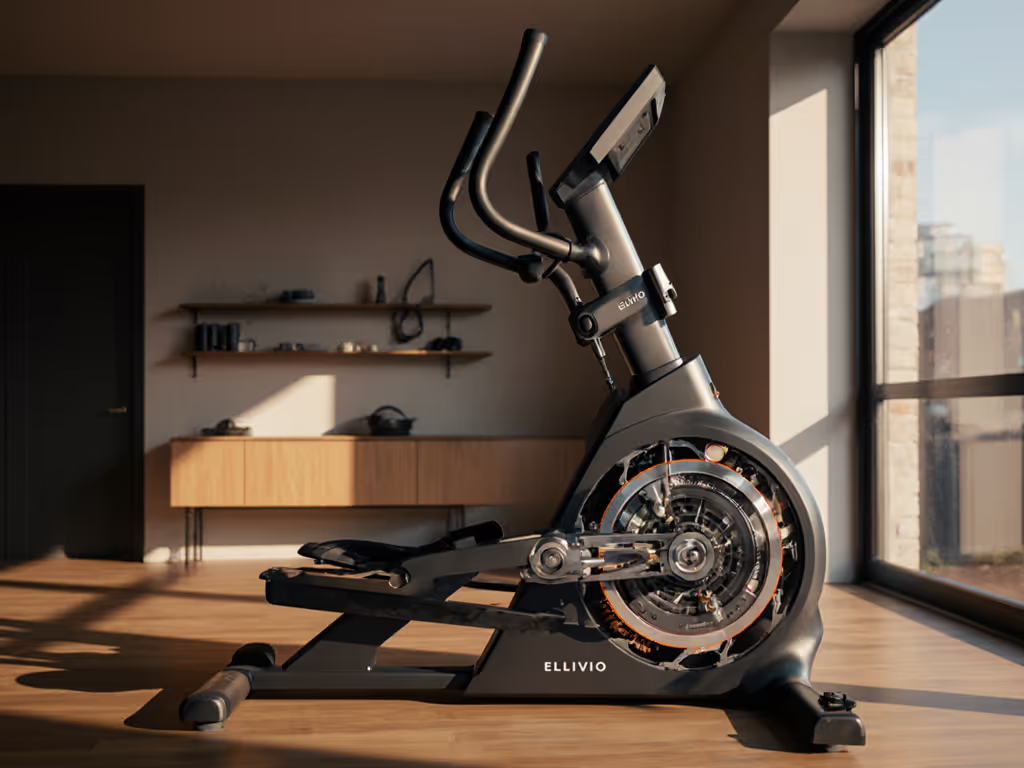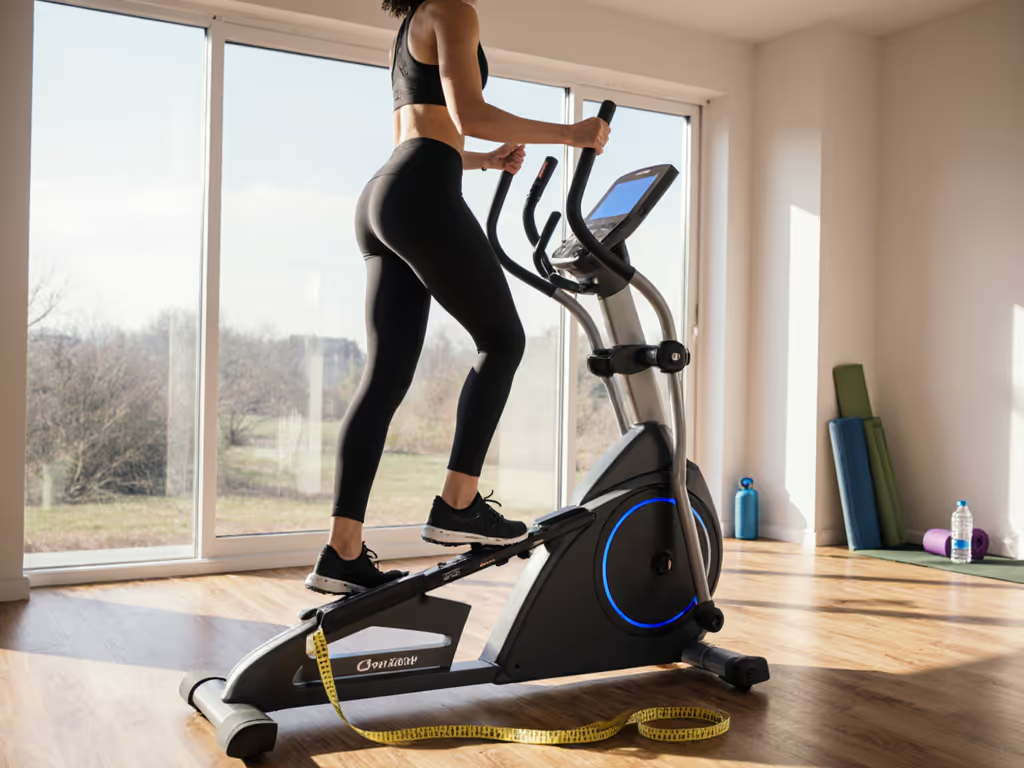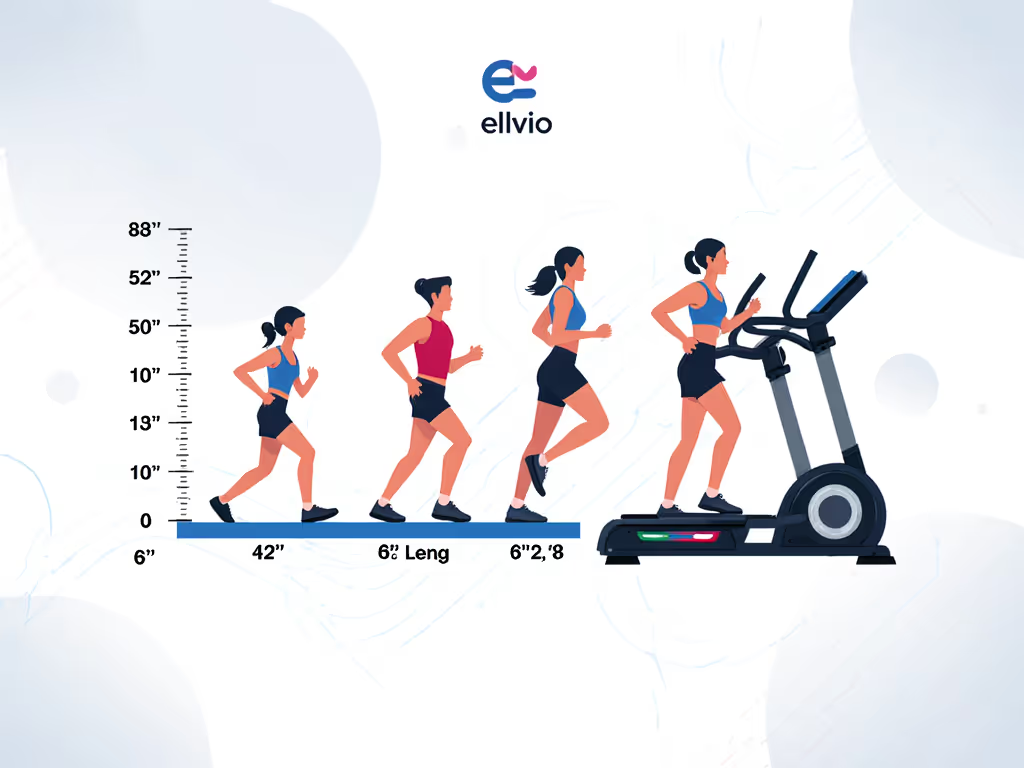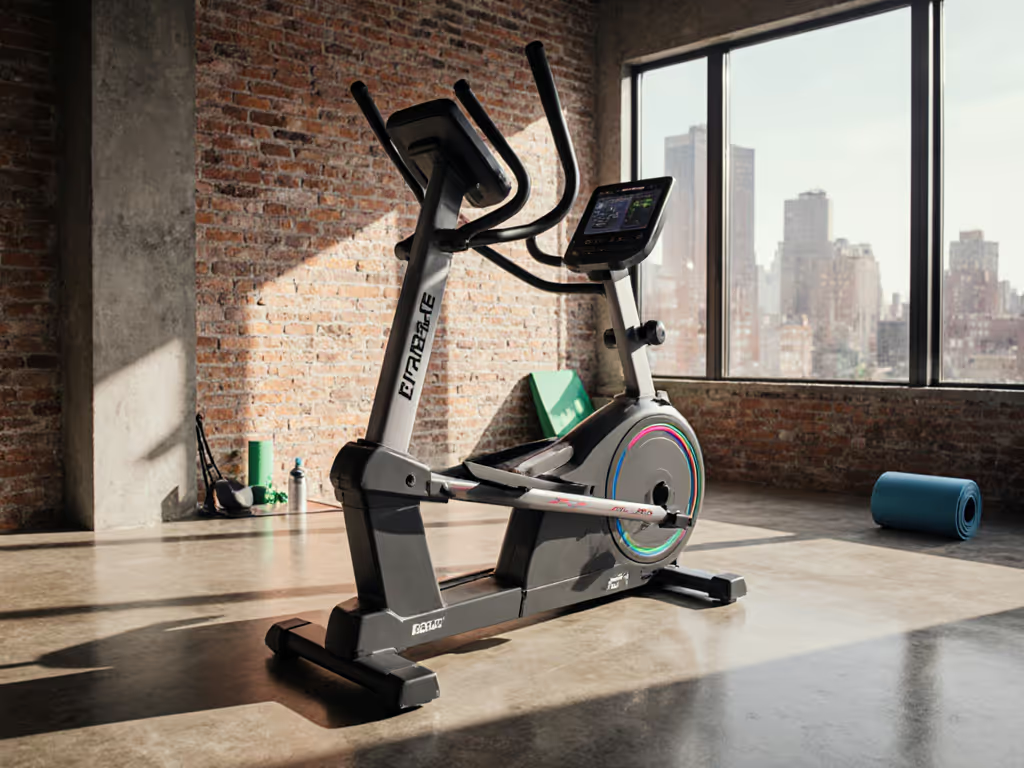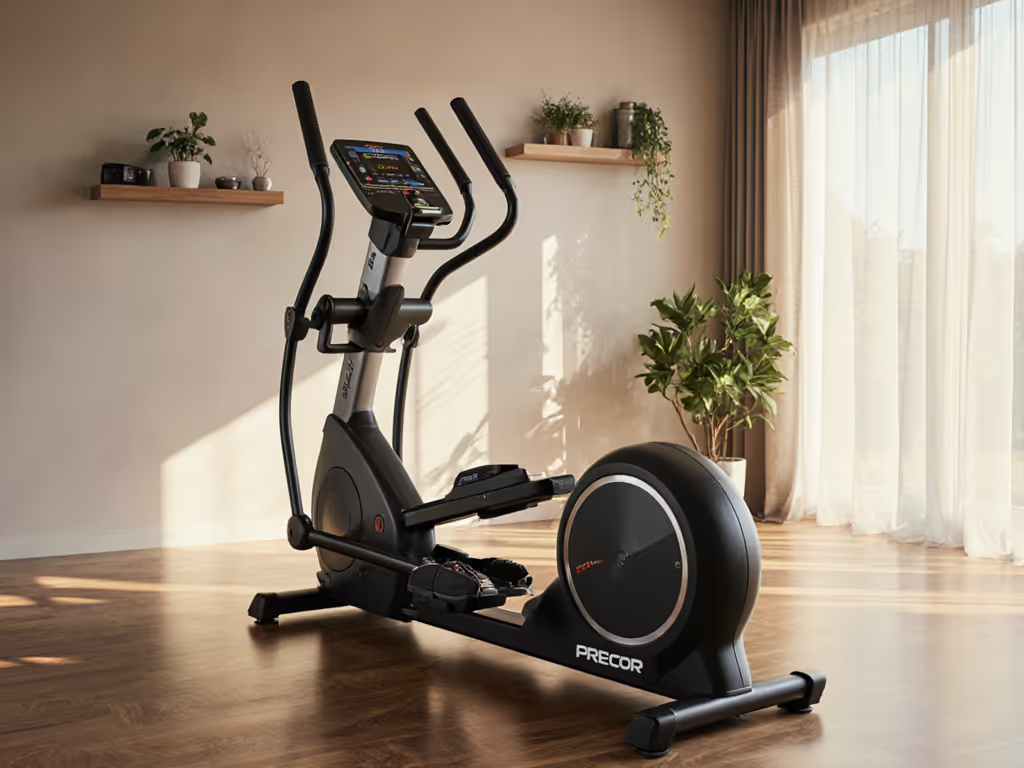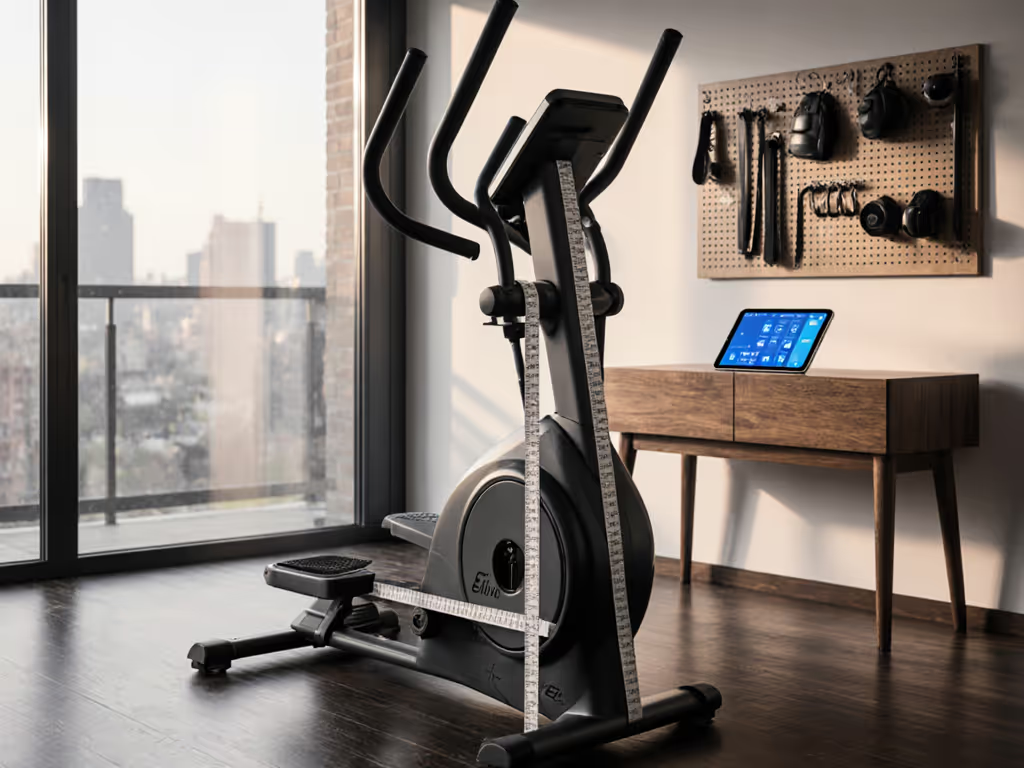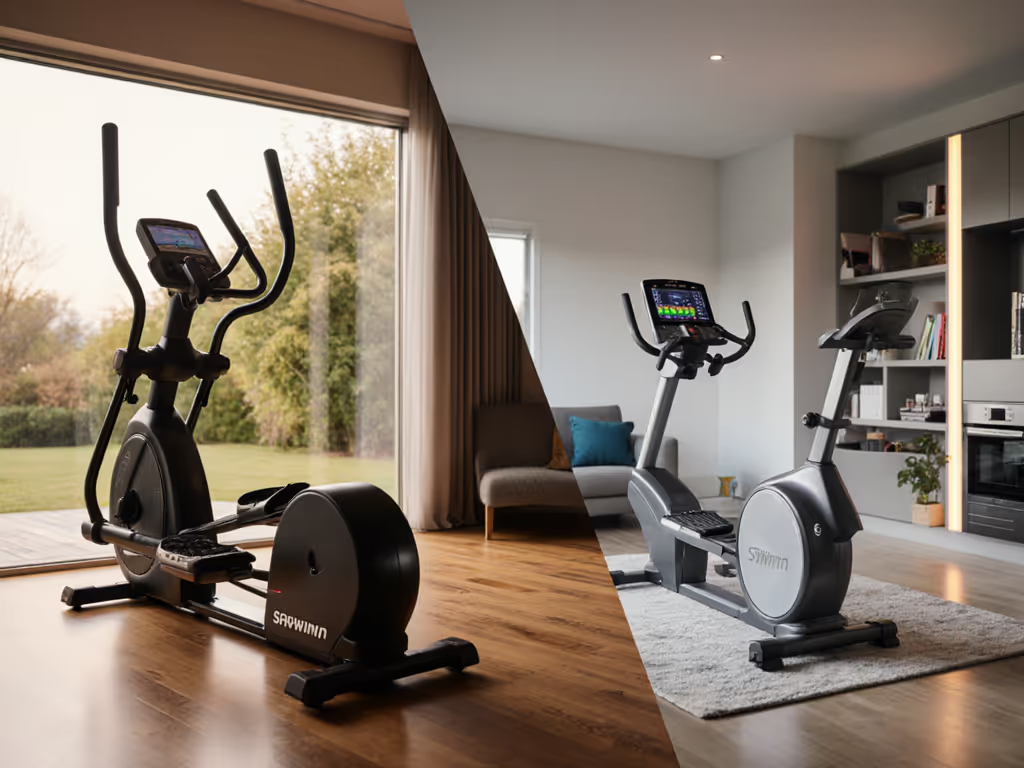If you're over 6 feet tall and have ever felt cramped, awkward, or like you're doing the splits on a standard elliptical, you're not imagining it. Finding the right elliptical for tall people means prioritizing one non-negotiable feature: a long stride elliptical that matches your natural gait. Skip this, and even the most expensive machine becomes a frustrating, underused relic. But get it right, and you'll discover smooth, joint-friendly cardio that fits your height (and your life) without compromises. Let's fix that one thing that's been holding you back.
Why Stride Length Isn't Just a Number (It's Your Comfort Lifeline)
Tall users often overlook stride length until they're mid-workout, knees protesting or hamstrings straining. Yet it's the silent dealbreaker. Too short (<18"), and you'll feel cramped, shuffling awkwardly. Too long (>22" for most), and you'll overextend, risking hip strain. The wrong fit doesn't just feel bad, it sabotages consistency. When your body fights the machine, you skip workouts. Sustainable comfort isn't a luxury; it's the shortest path to showing up daily.
After my own recovery period sidelined high-impact training, I rebuilt momentum on an elliptical in a tiny apartment. Two rules kept me consistent: zero setup friction and sessions short enough to finish before coffee. But none of it would've mattered if the stride felt wrong. A machine that invites you back is the real win.
How to Pinpoint Your Ideal Stride Length
Forget generic one-size-fits-most claims. Your stride is as unique as your height and inseam. Here's how to find your sweet spot, no guesswork:
-
Measure your inseam (accurately): Stand barefoot, back against a wall. Place a hardcover book snugly between your legs (like a bicycle seat). Mark where the top of the book hits the wall. Measure from floor to mark. This is your inseam in inches.
-
Multiply by 0.22: Industry biomechanics studies confirm this ratio reliably converts inseam to ideal stride length. (Example: 34" inseam x 0.22 = 7.48" -> round to 18.5" stride.)
-
Cross-reference with height (for validation):
| Your Height | Recommended Stride Length |
|---|
| Under 5'0" | 11" - 14" |
| 5'0" - 5'3" | 14" - 16" |
| 5'4" - 5'8" | 16" - 20" |
| 5'9" - 6'0" | 18" - 20" |
| Over 6'0" | 20"+ |
If you're over 6 feet tall, aim for 20 inches or more. Under 20", and you'll likely feel constrained (especially during incline or sprints).
Step 1: Audit Your Space (Tall People's Hidden Hurdle)
Before comparing specs, measure your space. Tall users often bump heads or hit walls because they skip this:
- Ceiling clearance: Stand straight where the machine will go. Raise your arms overhead. If your hands graze the ceiling, opt for a low-profile machine (max handle height < 72"). Basements with 8-ft ceilings? This is critical.
- Footprint + walking path: Add 24" in front/back to the machine's footprint. Can you walk around it while someone's using it? (Crucial for homes with kids or shared spaces.)
- Step-up height: Look for models under 12". High steps (like 14"+) create daily friction, especially if you're stiff in the morning. Low step-up height = fewer excuses not to start.
Step 2: Decode the Specs That Actually Matter for Tall Users
Stop drowning in marketing jargon. Focus on these three behavioral specs that impact your daily comfort and consistency:
Stride Length: The Non-Negotiable
- 20"+ is your baseline. Many tall-friendly models cap at 20", but lean toward 21"-22" if you're 6'2"+. (Over 6'4'? Prioritize adjustable stride (more below).)
- Adjustable vs. fixed: If multiple heights share the machine (e.g., 5'2" partner + 6'3" you), only adjustable stride solves this. Fixed 20" models force compromises. Adjustable ranges like 18"-22" accommodate most couples seamlessly.
Q-Factor: The Invisible Comfort Killer
This is the width between pedals (side-to-side). Too wide (>10"), and your hips torque unnaturally. Too narrow (<6"), and knees knock together. Ideal: 6"-8". Check specs (this gets buried in manuals). A narrow Q-factor feels instantly stable, like walking on a path instead of ice skates.
Handle Reach & Console Height
- Handles should align with your hips when standing naturally. If you're hunched or reaching up, discomfort follows.
- Console height: Eye-level when upright. No craning necks! Some models (like NordicTrack's Freestride) adjust stride and handle position (game-changers for tall users).
Step 3: Avoid the "Gym Machine" Trap
Commercial gym ellipticals often tout 20" strides as universal. False. They're optimized for the average user (5'5"-5'10"), leaving tall users shoehorned. Home machines let you tailor-fit. Here's what to prioritize:
- Rear-drive vs. front-drive: Rear-drive machines (pedals closer to you) typically offer longer strides (20"+) and smoother motion, ideal for tall frames. For a deeper breakdown of drivetrain ergonomics and long-term comfort, see our front vs rear drive elliptical guide. Front-drive often maxes at 18" and feels choppier.
- Incline range: 10%+ incline tests stride compatibility. If your knees pinch during incline, stride is too short. True tall-friendly models maintain comfort at full incline.
- Weight capacity does not equal stride fit: A 400-lb capacity won't help if stride length cramps you. Prioritize biomechanics over brute specs.
Step 4: The Multi-User Reality Check
Over 65% of home elliptical buyers share them with partners of different heights. If that's you, skip fixed-stride models. Seek:
- Power-adjustable stride (e.g., alters via console buttons)
- User profiles that save stride settings (so no manual tweaking)
- Q-factor under 8" (accommodates wider height ranges)
Small, repeatable wins turn cardio into a lifelong habit. For couples, that win is one-touch personalization so both partners feel instantly at home.
Step 5: Test Drive Like a Pro (No Gym Required)
Can't visit a store? Simulate stride at home:
- Mark your stride: Use tape to outline 10 steps at your calculated length (e.g., 20").
- Walk the line: Do 10 slow steps. Does it feel natural? Or are you short-stepping or overreaching?
- Mimic motion: Stand in place, swinging legs forward and backward through the stride arc. Notice knee or hip tension.
If it feels off when dry, it'll feel worse sweaty. Trust your body, not spec sheets.
Sustainable Comfort Starts Today
You don't need extreme workouts or marathon sessions. Just a machine that feels right from rep one. That means matching stride to your inseam, not a marketing chart. It means handles that don't force hunching. Low step-up height so you start without thinking. This is how tall users build unbreakable routines (even in small spaces).
Forget buying motivation. Buy the smoothness that makes you want to return. Start with your inseam measurement. Check stride, Q-factor, and ceiling clearance. Then find the machine that answers your biomechanics, not the average user's.
Your actionable next step: Grab a tape measure right now. Take your inseam (step 1 above). Text it to yourself. When comparing models, filter instantly for that stride length. One less decision tomorrow. Make it easy, make it daily.
